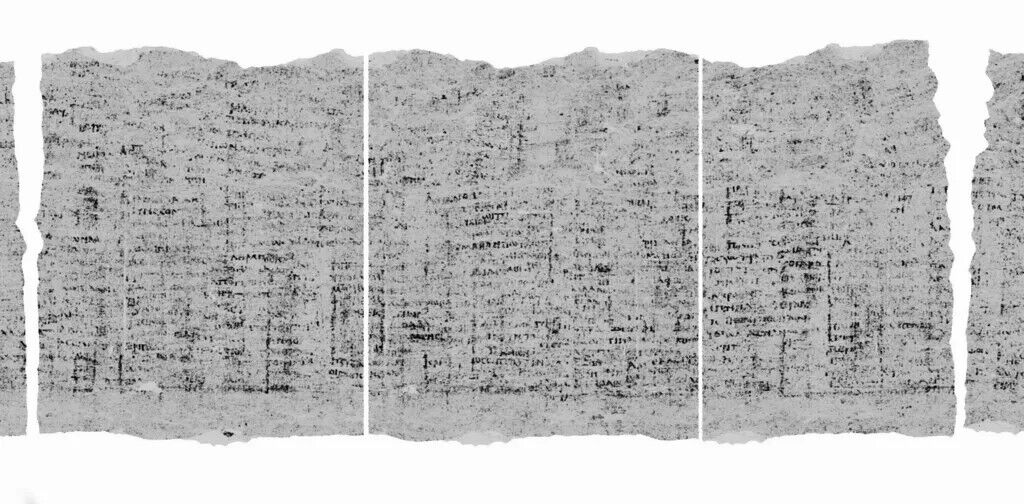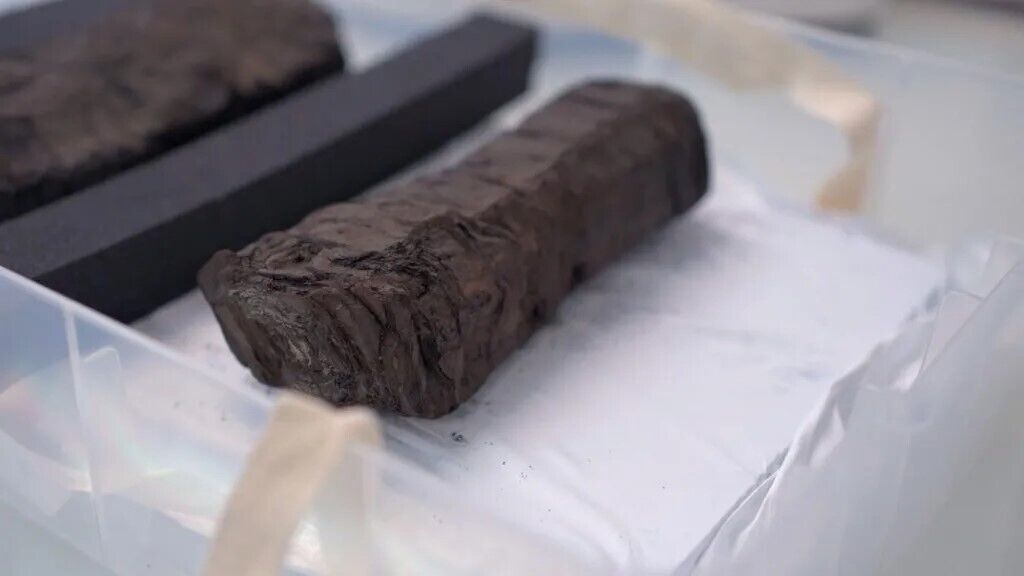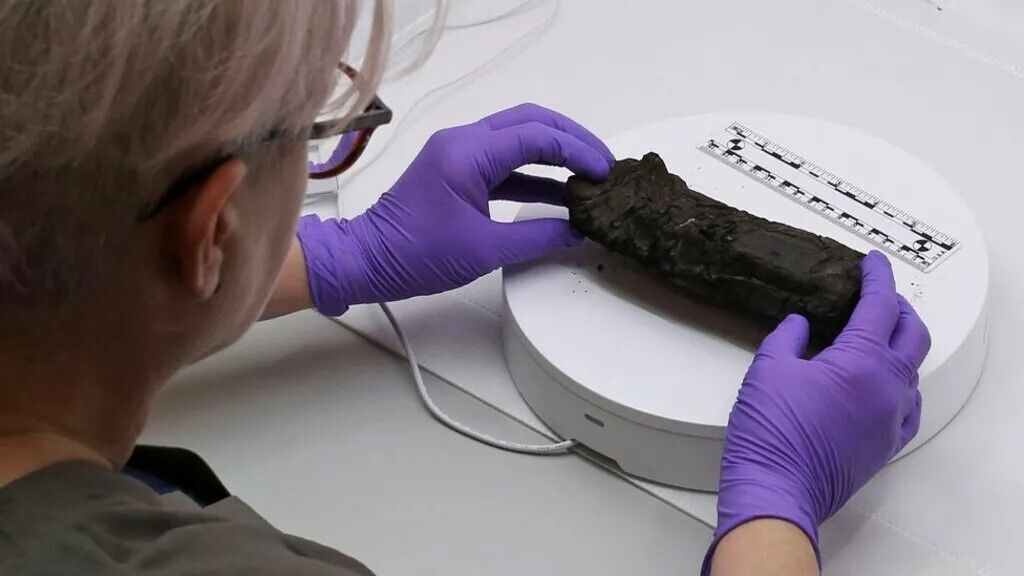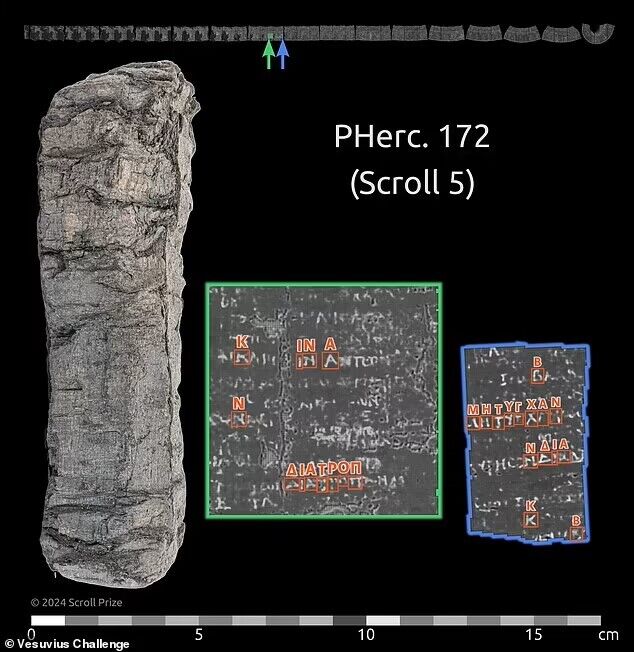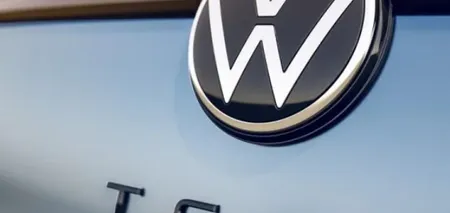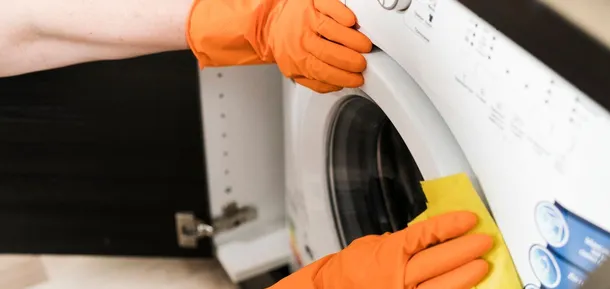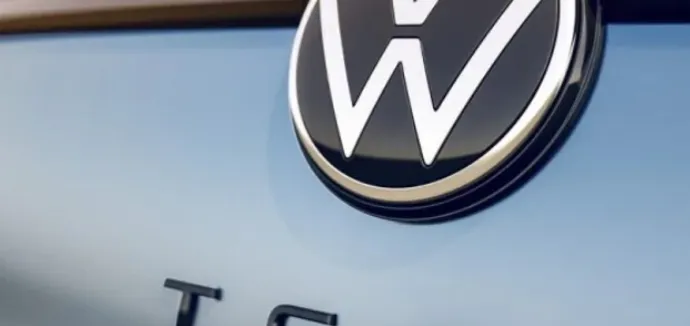News
AI helped scientists read an ancient scroll that was charred during the eruption of Mount Vesuvius
For the first time in 2000 years, scientists have used artificial intelligence to look inside an ancient scroll that was heavily charred during the eruption of Mount Vesuvius in 79 AD. In the middle of the eighteenth century, in a mansion in Herculaneum, an ancient Roman city near Pompeii, piles of rolled-up papyrus were discovered that had been burned by lava and could not be physically unfolded because they would have crumbled.
But now scientists have used a combination of X-ray imaging and AI to virtually unfold it, revealing lines and columns of text. More work is needed to make the scroll fully legible, but the team behind the project says the results are very promising, the BBC reports.
According to scholars, the Herculaneum Scrolls have remained one of the ancient world's many tantalizing mysteries for nearly 2000 years. Since their discovery in the mid-18th century, experts have attempted to unwrap some of the hundreds of scrolls using everything from rose water and mercury to vegetable gas and papyrus juice.
As a result of numerous attempts and different methods, experts have managed to open only a tiny number of small fragments, from which it was possible to understand that these are philosophical texts written in ancient Greek. But most of the scrolls were so damaged that they were considered unreadable, CBSNews notes.
However, thanks to recent attempts, researchers have been able to decipher some selected words using artificial intelligence, X-ray and computer scanning to distinguish the ink from the papyrus on which they were printed. Scientists call this a major breakthrough.
Researchers say they have so far been able to digitally open and start reading one of the ancient scrolls, known as PHerc.172. This ancient scroll is one of three kept at the Bodleian Libraries at Oxford University in England.
The team of experts participating in the Vesuvius Challenge, which offers cash prizes to anyone who helps unlock the delicate scrolls, says they have practically unwrapped the papyrus to reveal columns of text that Oxford scholars have already begun to decipher.
"This scroll contains more recoverable text than we've ever seen in a scanned Herculaneum scroll," said Brent Seals, one of the co-founders of the competition.
"We are confident that we can read almost the entire scroll, and we say that with confidence. We are going to move from studying a few words to really significant passages," said project manager Stephen Parsons.
Only verified information is available on the OBOZ.UA Telegram channel and Viber. Do not fall for fakes!







